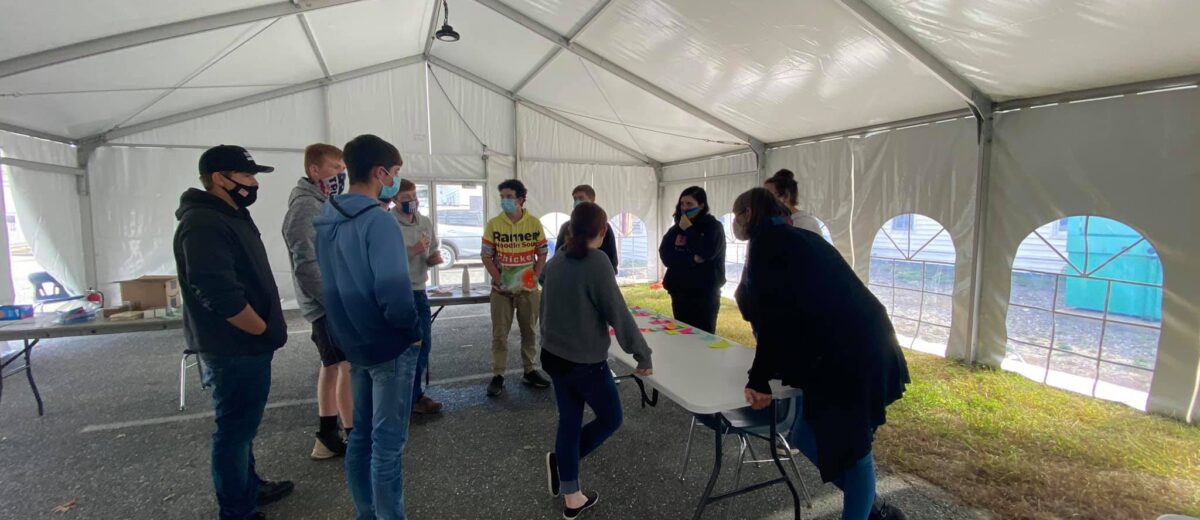by Sarah Hooper, Education Specialist
Crowd the Tap Maine is an education program that supports teachers and students as they explore drinking water quality in their community. We are currently in the pilot phase of this program and are working with eight teachers and about 300 students in six different schools. Students collect water samples and data about drinking water quality from homes and buildings all across the community and look for patterns and differences. If they find one part of the community where the drinking water seems more likely to have troublesome odors, tastes, colors, or chemical properties than in other parts of the community, the students work with municipal officials and others to figure out what the problem might be and, potentially, to help in correcting it.
The beauty of Crowd The Tap is its flexibility in the classroom. It can be embedded in curricula in any number of ways – lightly as a unit launch, to deeply as a fully-developed project-based learning sequence. We are using it to engage students in an alternative pathways program in a rural high school.
Student feedback will inform the design of specific lessons and activities to fit their learning needs and graduation requirements.
Organized chaos?
Teaching is much different from our pre-pandemic past-life. And if teaching is different, then so is learning. Currently, students are meeting in-person, albeit in a big tent in the school’s parking lot. That said, always hanging over us is the uncertainty of if – or when – we’ll be required to go completely virtual. So for now, I maximize our in-person time, keeping activities and learning focused and relevant to the students and the project.
My goals for the project are few: 1) Make the learning engaging, relevant, and accessible to these students; 2) Hit some key learning targets needed for graduation – primarily the Next Generation Science Standards Science and Engineering Practices and some targeted Disciplinary Core Ideas. The learning paths – the pedagogy – could go many ways. Because I’m a deep believer in exploration and discovery, particularly for students who don’t thrive in a traditional classroom structure, I opted to introduce Crowd the Tap through open inquiry activities.
Enough organization to guide the general sequence. Enough student-driven exploration to invite questions, trial and error, peer encouragement and support, and a bit of good-natured bantering. Organized chaos. I offered light-touch nudges and hints, but rarely answered questions directly. I wanted them to explore, wonder, figure it out. Even if they didn’t quite get it. Yet. Organized chaos.
Read the rest of this story and find links to lesson plans at CSI-Maine.org.
